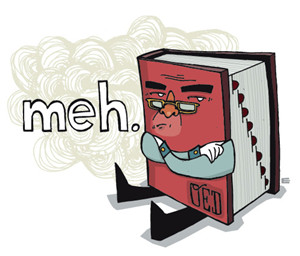
今天的《词汇大师》讨论的是美国的阵亡将士纪念日。阵亡将士纪念日是美国大多数州都要纪念的节日,时间原为5月30日,1971年以后,为保证联邦雇员都能享有这一休息日,许多州将它改在5月的最后一个星期一。 同时,它还标志着夏天和旅游旺季的来临……
Broadcast: May 27, 2004
Memorial Day weekend is almost here, and with it, the unofficial start of America's summer season. Traditionally, Memorial Day is the busiest day in the year for traveling carnivals with their trained animals, games of chance and sideshow acts, complete with fire-eaters, sword-swallowers and other colorful, even freakish performers.
The number of working sideshows has diminished since the advent of television and the amusement park. And fewer "carnies" are working the crowds. But you'll still find a traditional sideshow at New York's Coney Island, where some of the special jargon of the carnie is still spoken and understood. So step right up folks, as Todd Robbins, Coney Island's sideshow impresario takes Wordmaster guest host Adam Phillips on a little tour.
PHILLIPS: To most Americans, that is the sound of a carousel or "merry-go-round." But to carnival and circus workers, what you're hearing is a "jenny" or "flying jenny" if the wooden horses go up and down.
Sideshow entertainer and historian Todd Robbins, says that's just one example of the special vocabulary of the carnival. These traveling shows would roll into town, set up for a day or two, even perhaps a week or two, then pull up stakes and move on to the next stop.
ROBBINS: "And because of this nomadic quality, they have a tendency to rely upon themselves and not look to the communities for much other than basic supplies. Because of that, there's a certain jargon that has developed."
Mr. Robbins freely concedes that, over the years, certain "carnies" as carnival folks are often called developed a certain shady reputation as well. He points to the midway, the section of the carnival where food stands and games are set up and where the customers, called "marks," wander around distracted by all the activity.
ROBBINS: "The term 'MARK' comes from the tradition of having someone putting a little mark on a person's back with a little piece of chalk to show, for instance, that they were at a game or they were at a food stand and took out their wallet, and they got what is known as a 'peek at the poke' which means that saw what they had in the wallet and there was a lot of money there. So they put a little mark on the person's shoulder so as when they were going along the games people would be really working to get them in to get to take their money."
Today, carnivals are part of a regulated industry — and sideshows, when they exist at all, are tame affairs. However, Todd Robbins says that 40 or 50 years ago carnivals provided an all-day exotic adventure for entire communities.
ROBBINS: "They would come out and watch them put up the tent and set up the whole show. They'd wander around and they'd see them watering and exercising the animals. And then an hour before the show would start, they'd open the sideshow right next to the entrance and say, 'the show is so big on the inside; we cannot put it in the main tent. We have a whole separate show featuring strange and unusual, bizarre and beautiful people — see it now.'"
Todd Robbins lapses easily into the cadence of an old time "barker," the term non-carnival people call the man standing outside the tent trying to lure customers inside.
ROBBINS: "Traditionally, the barker is known as the 'outside talker.' And a 'barker' in a carnival is actually a guard dog. So if you ask where the barker is, they'll say 'Come here, king! Come on over here, boy!'"
While admission to the traditional sideshow was often very cheap, once inside, there was ample opportunity to, as Mr. Robbins puts it, "relieve oneself of more money." That's what "dings are for.
ROBBINS: "It would be an additional charge to see various things. Or there would be souvenirs at the end of various acts. The magic act might sell you a magic trick. The giant might sell you a giant's finger ring. The dwarf or midget in the show might sell you a miniature bible. We are not sure why it's called the ding, but I think it is the sound of a cash register ringing up a sale."
Most sideshows contained ten acts, with an obligatory extra act added on.
ROBBINS: "At the end, there was something called a 'blowoff,' and it was the last act and usually something very strong. There was a term called 'working strong' which meant there was something shocking and startling about it. Like in our show we have a girl who turns into a gorilla right before your eyes. It was often what is known as a 'half and half' which would be a half-man, half-woman who would talk about their condition and then you'd step behind the curtain into the annex which was the curtained-off area where the blowoff was performed, and sometimes sell you little postcards showing themselves in the nude."
It was a sight that kept almost everyone in the audience either amazed or fooled and the carnies, in the money. For more about sideshows and sideshow jargon, visit Todd Robbins' website at Carnivalknowledge that's c-a-r-n-i-v-a-l-k-n-o-w-l-e-d-g-e dot com and you're on your own.
For Wordmaster, this is Adam Phillips reporting from Coney Island New York.












